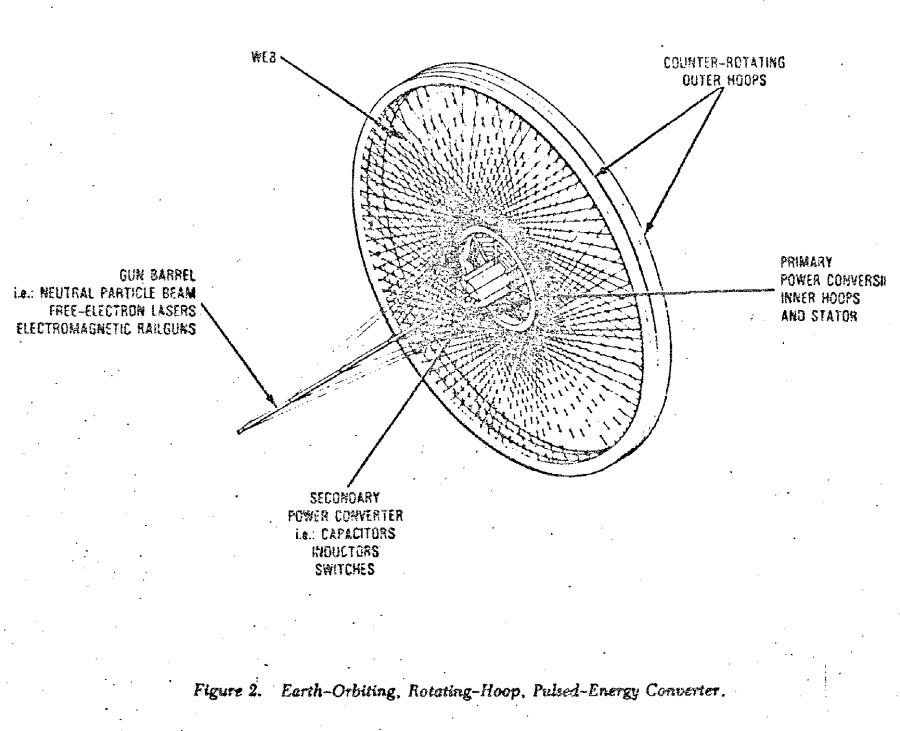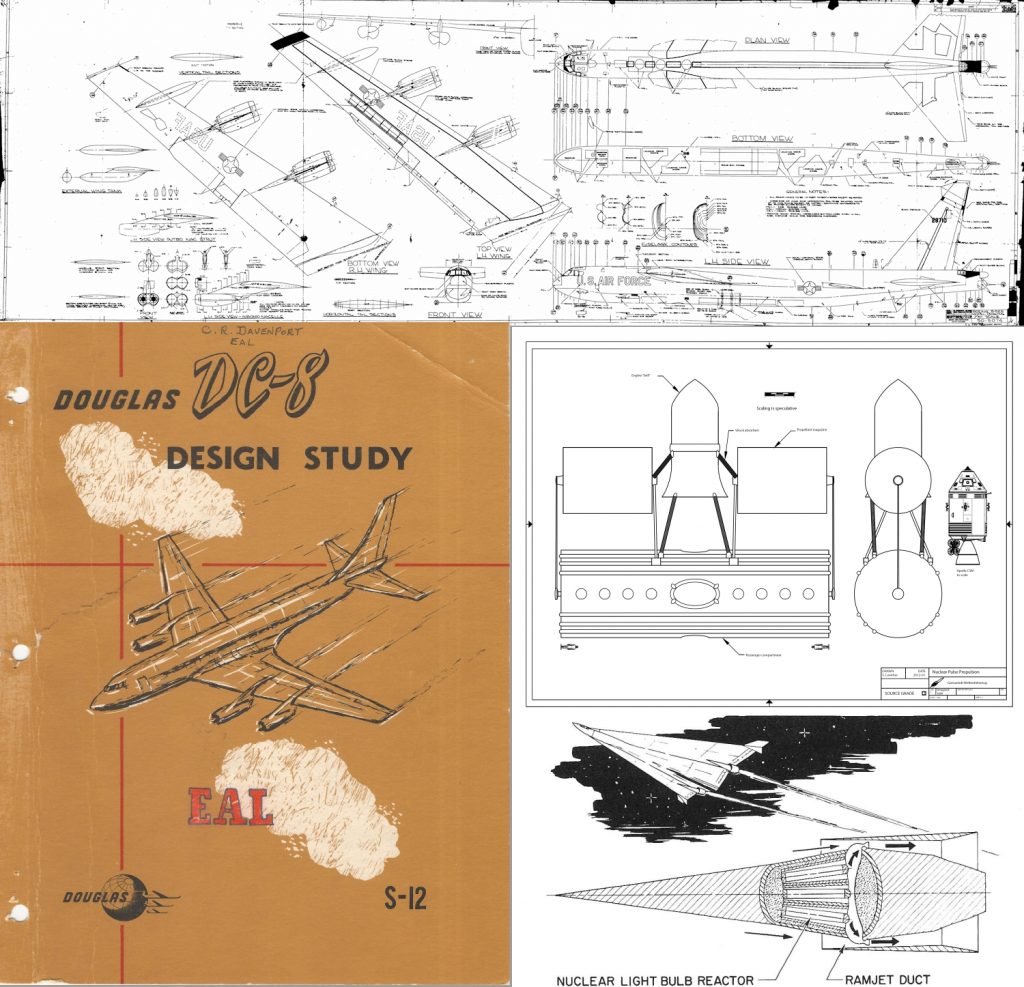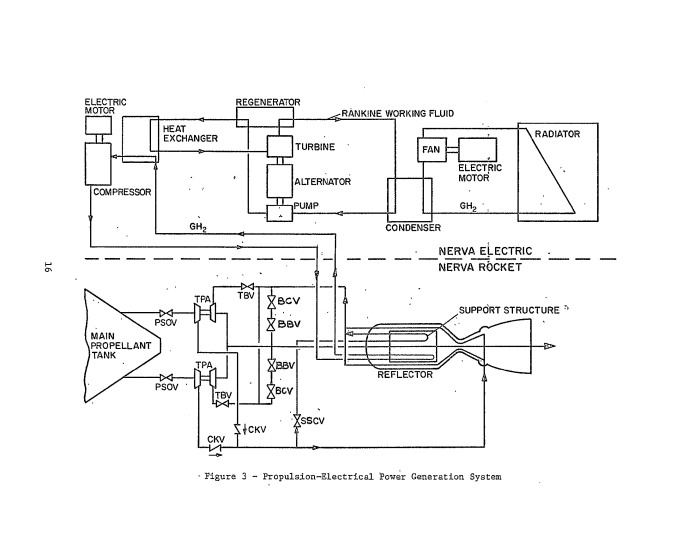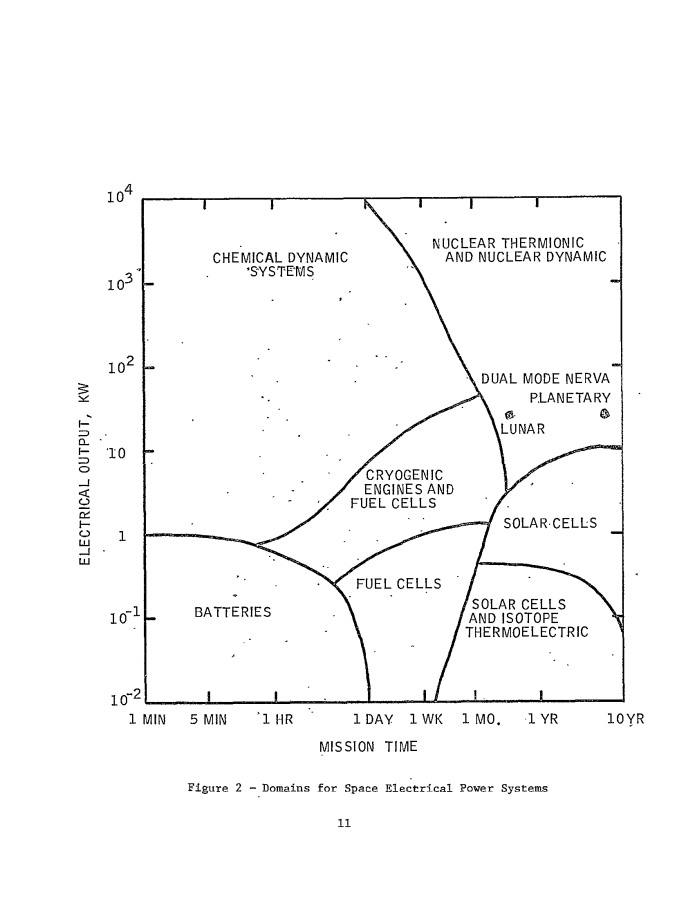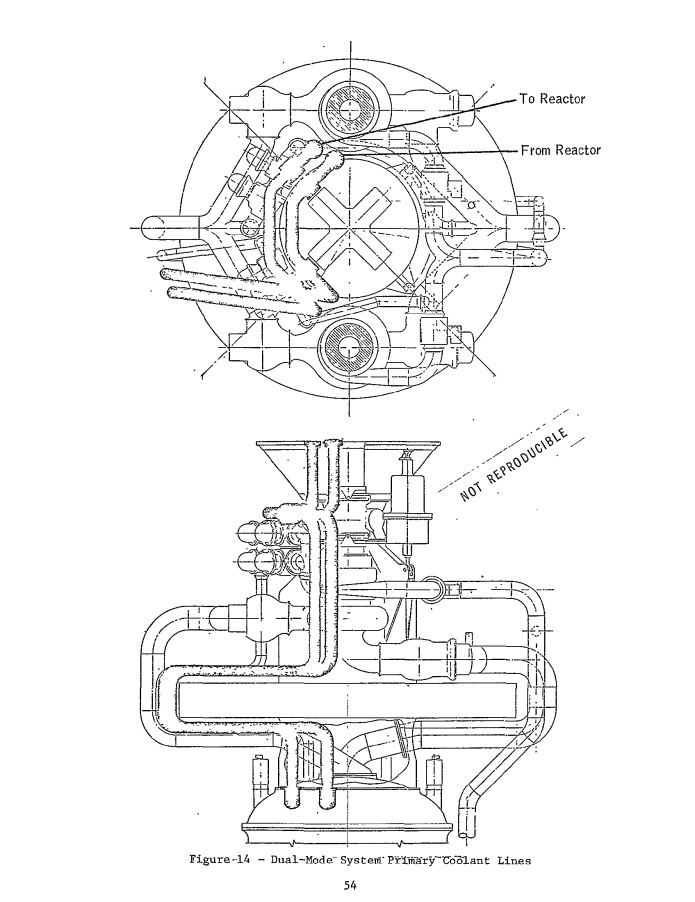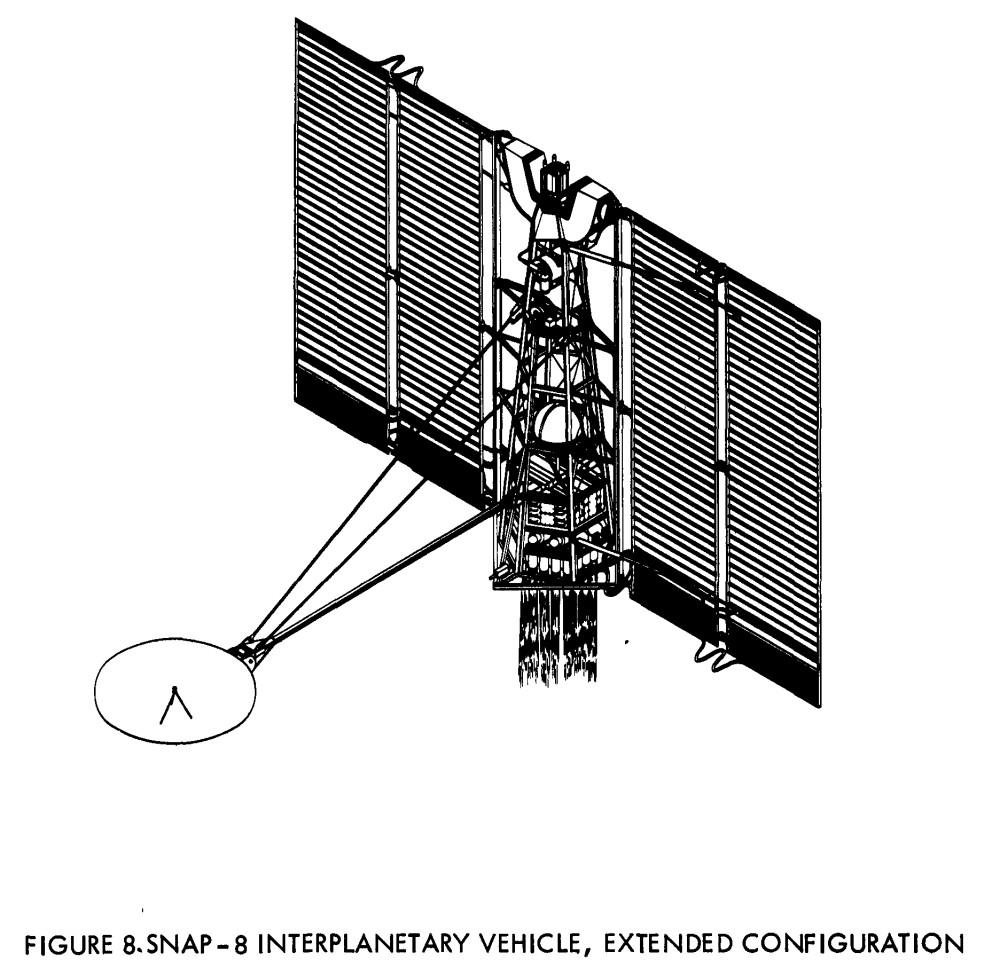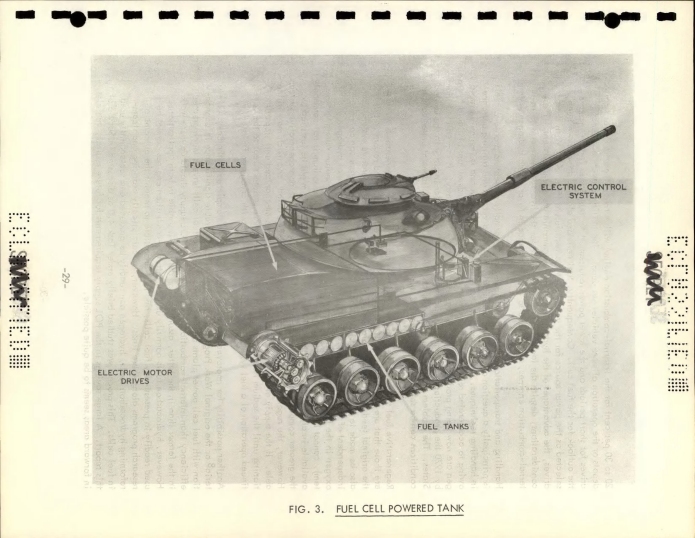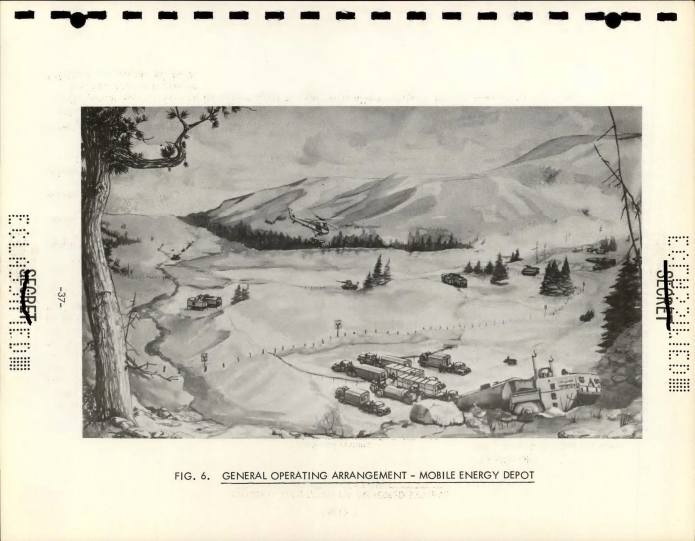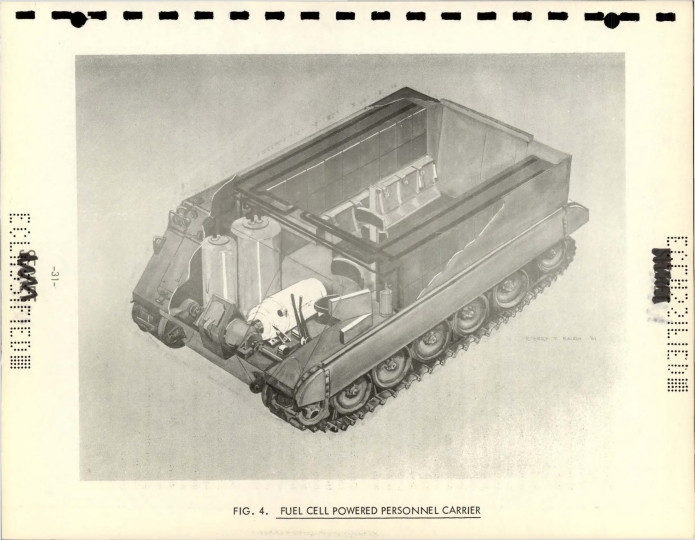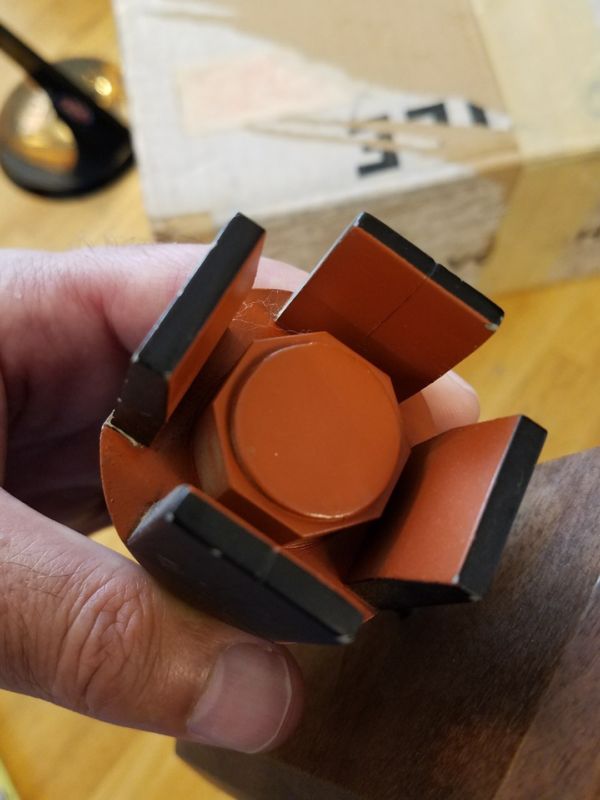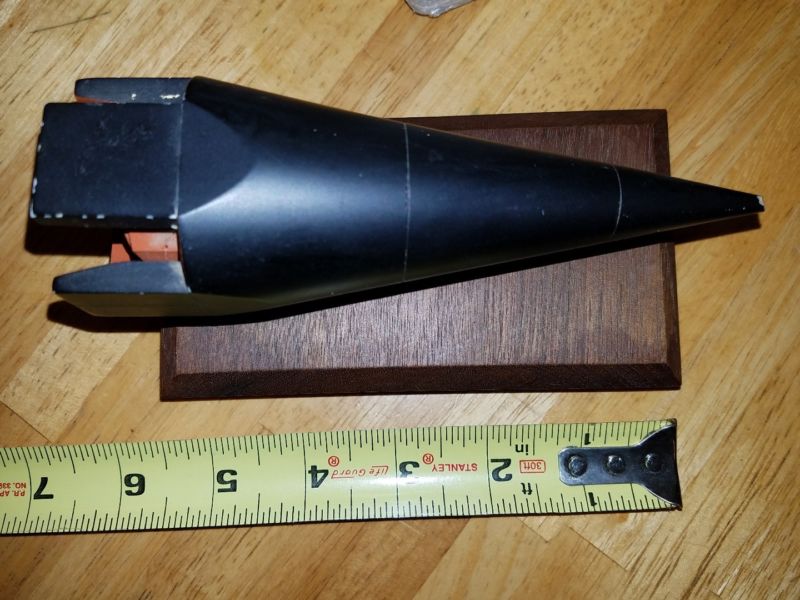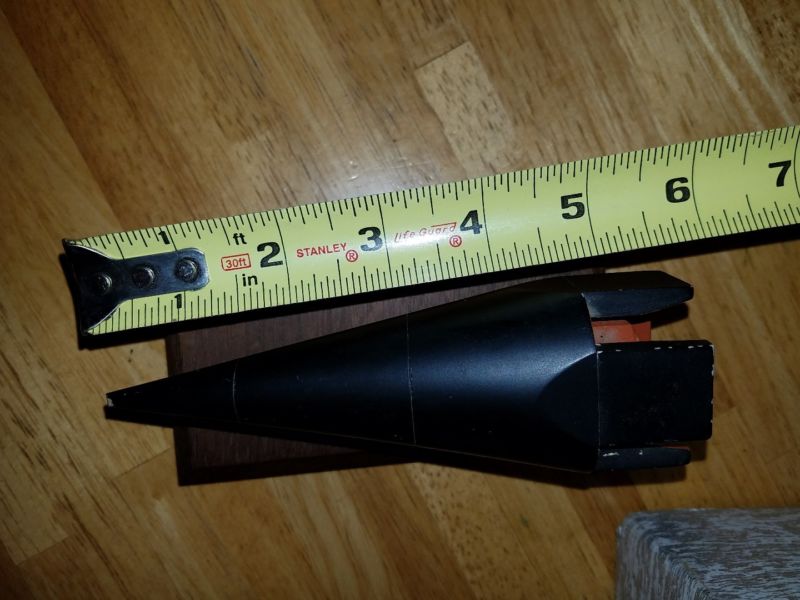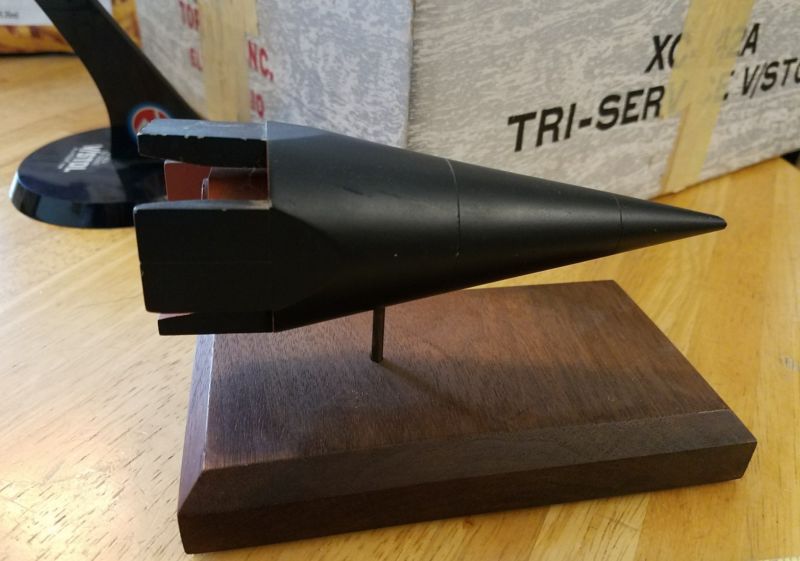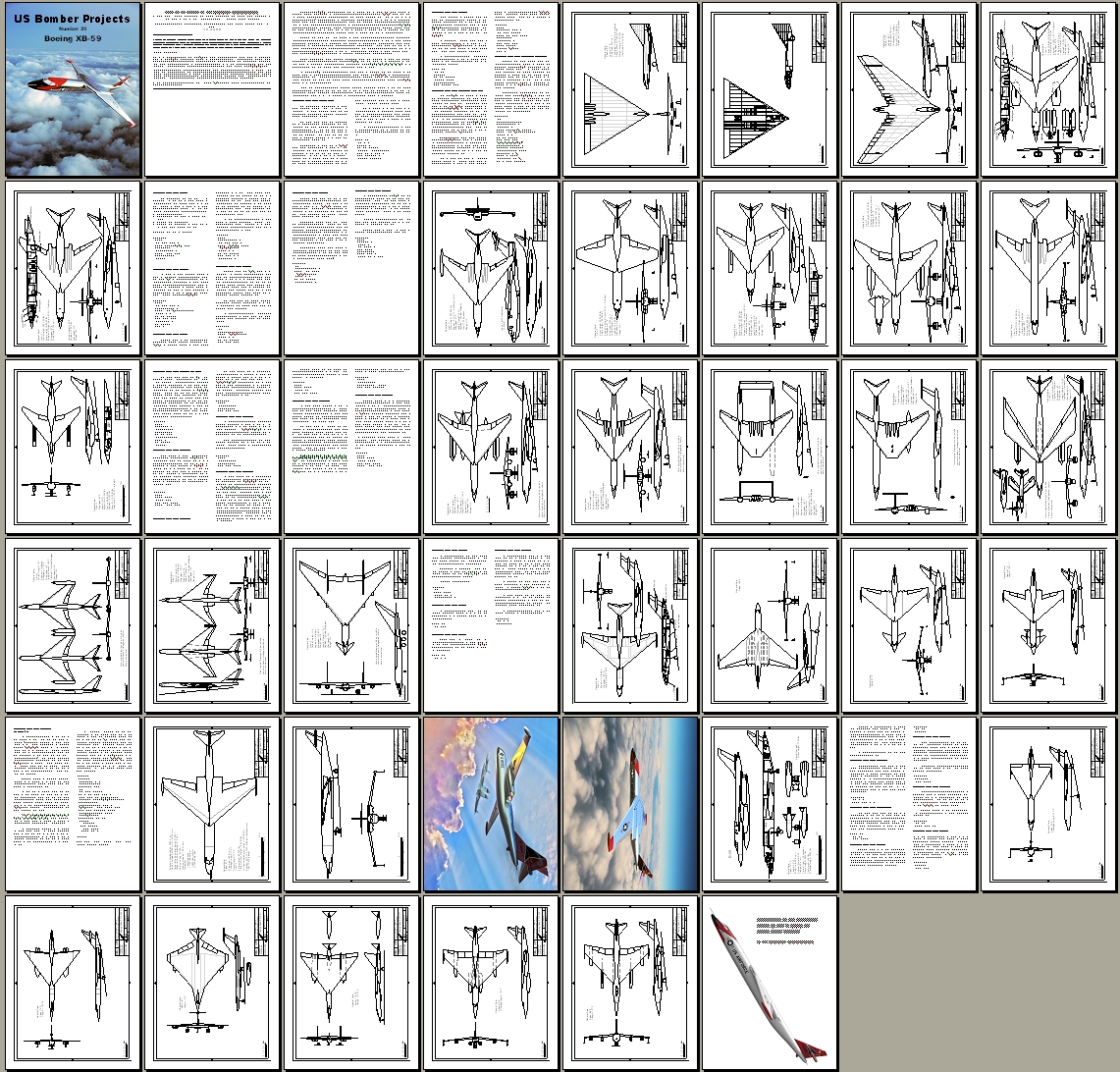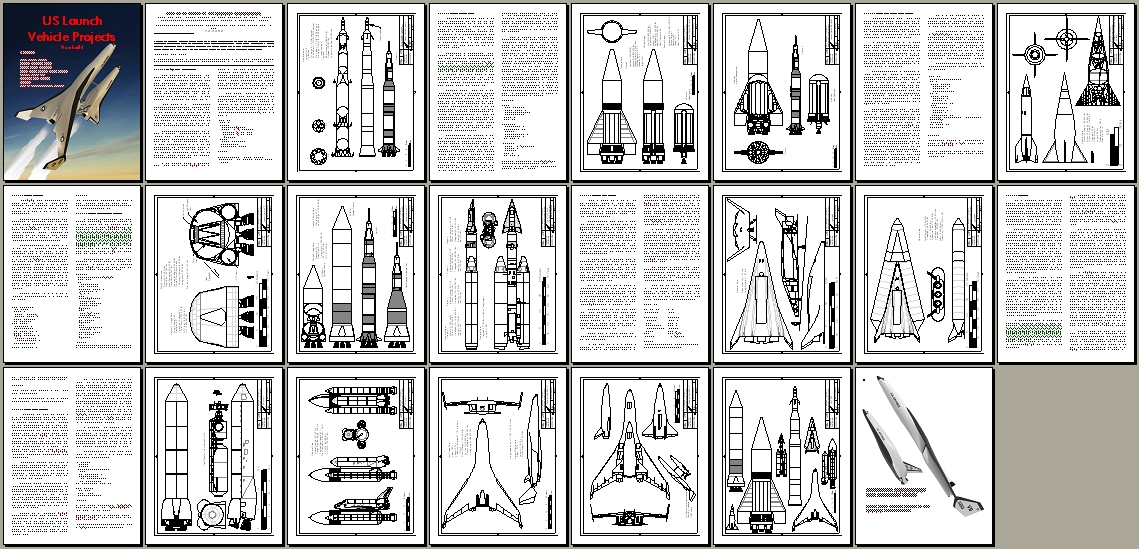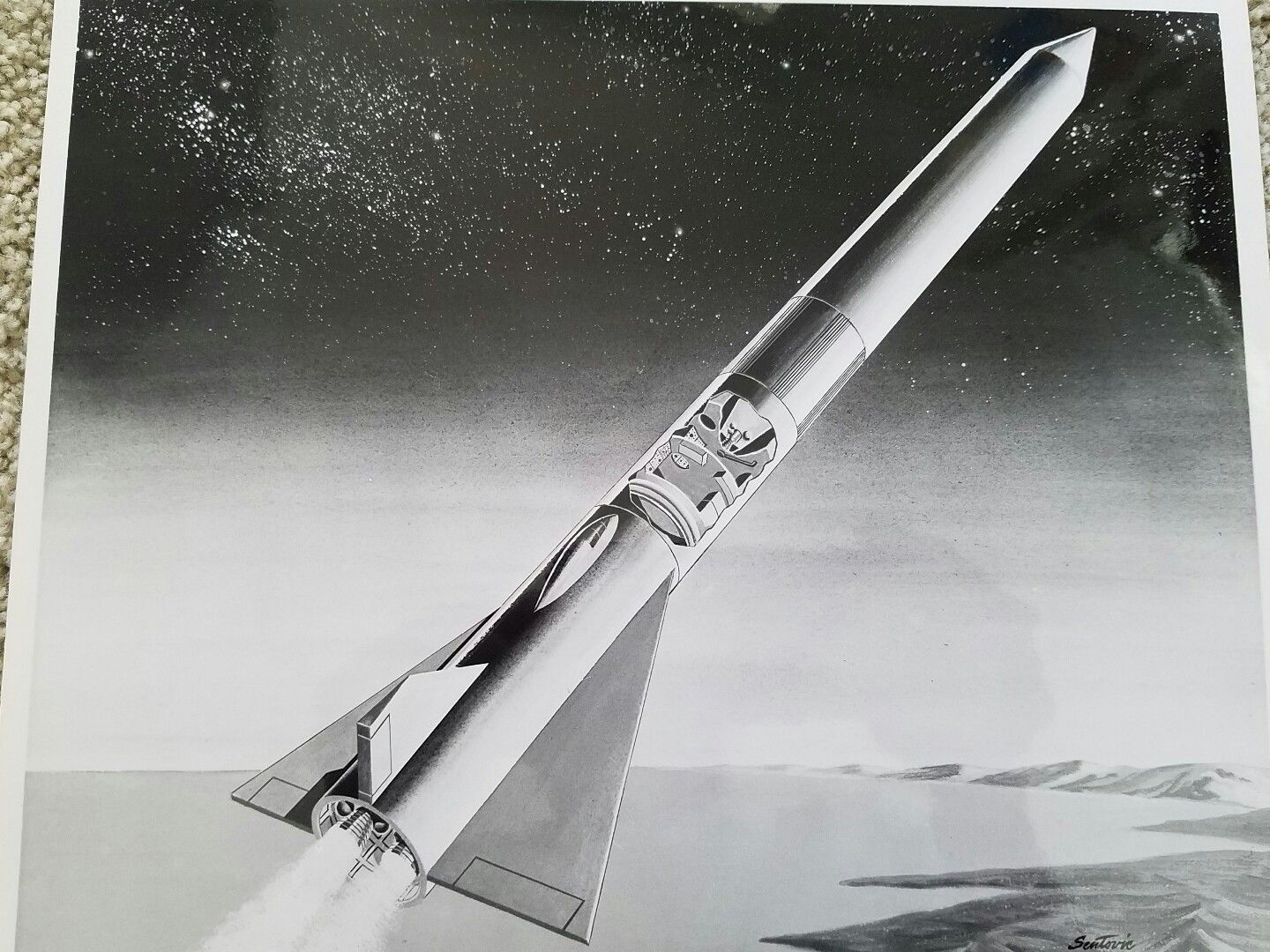The Soviet Tsar Bomb, dropped in 1961 and with a yield of around 50 megatons (backed down from the design yield of 100 megatons) is acknowledged as the biggest bomb ever tested. But is it the most powerful bomb ever designed, or ever built? I’ve discovered some snippets of evidence that the US *may* have designed, and even built, an even bigger bomb.
Several frustratingly unenlightening reports give bits and pieces of information on a bomb code-named “Flashback.” This device was apparently air-dropped near Johnston Atoll. “Flashback” was designed by Sandia Labs and flown from Kirtland Air Force Base to Oahu, Hawaii and then to Johnston Atoll. There are some Terrible Quality Photos:
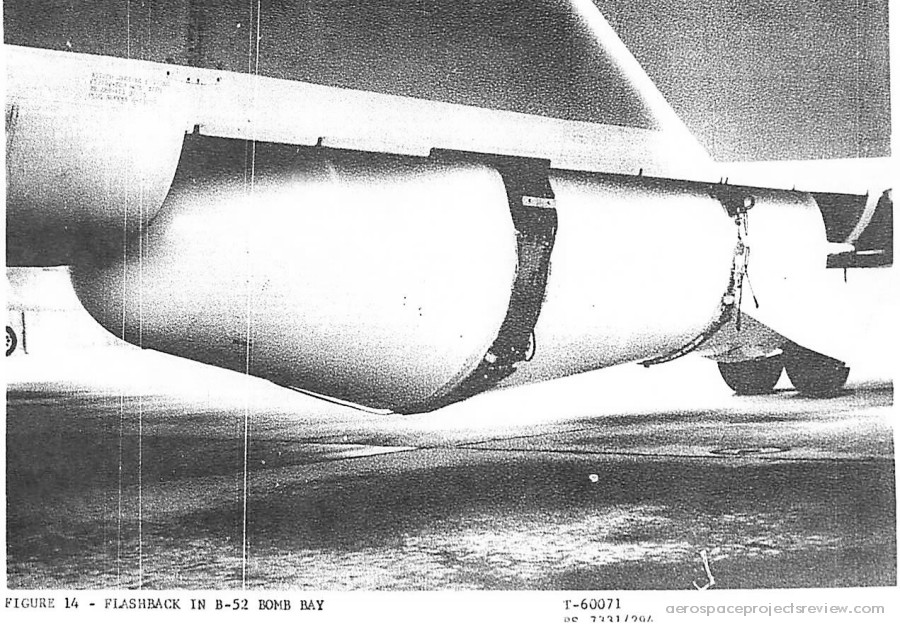
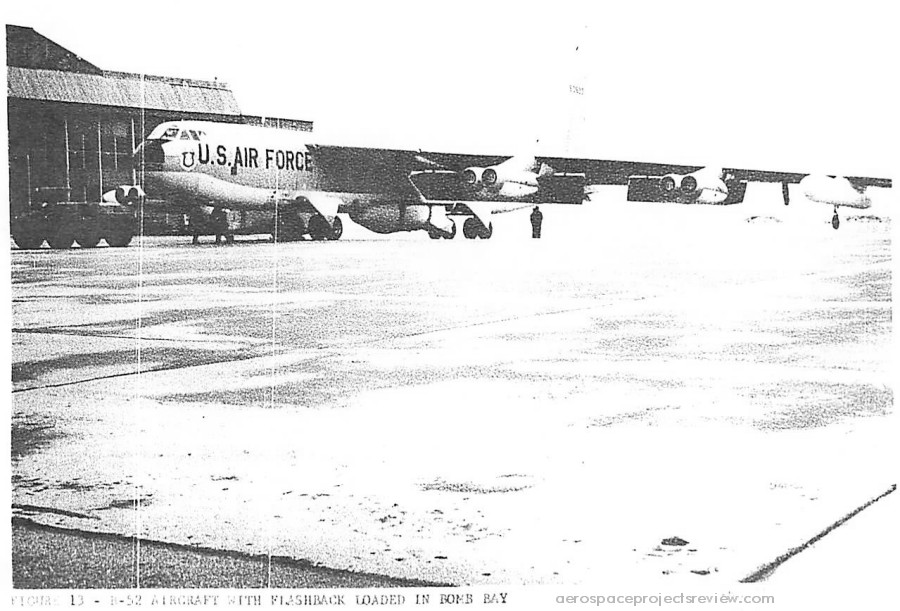
The Flashback bomb was so big that it could not quite fit within the confines of the B-52 bomb bay, and required the removal of the bomb bay doors.
Of course, this could have been purely an aerodynamic shape. Or perhaps it was a large conventional bomb, a giant “Daisy Cutter.” Or perhaps it wasn’t an actual bomb as such, but just some sort of science experiment to be dropped from an aircraft. Lots of possibilities. But those possibilities drop away with some of the hints that are provided, such as:
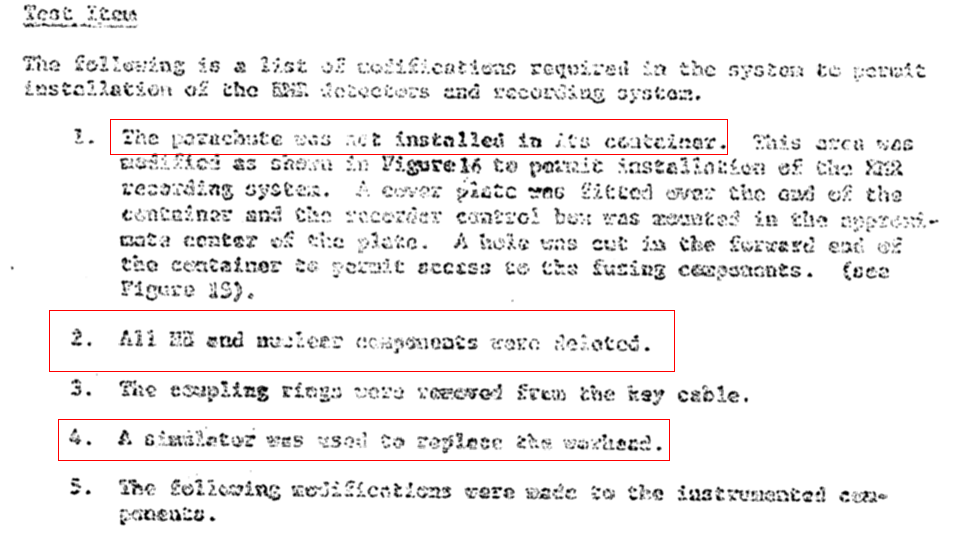
This came from an electromagnetic radiation effects report, describing – seemingly – the effect of radio emissions from the B-52 upon the electronics of the Flashback bomb. Since the bomb projected well below the belly, it was subject not only to very cold temperatures but also to intense radio transmissions from the antennae below the B-52 fuselage, so it makes sense they’d test for that. You don’t want the B-52’s communications to cause the bombs fuzing to go screwy. In this particular test, the parachute was not packed within the tail of the Flashback; instead test instruments were fitted there. More tellingly, “All HE (high explosive) and nuclear components were deleted.” Emphasis mine. Additionally, “A simulator was used to replace the warhead.”
You don’t have a warhead in a science package. You don’t have nuclear components in a conventional bomb. and if this was simply an aerodynamic and mass simulator of a proposed bomb… you wouldn’t remove the nuclear materials, because you wouldn’t have installed them in the first place. You don’t fill a mockup full of jet fuel, after all.
Such details as the weight of the unit and the yield of the device are seemingly not given. But they can be guessed at. A report on testing of the tailfin has this:
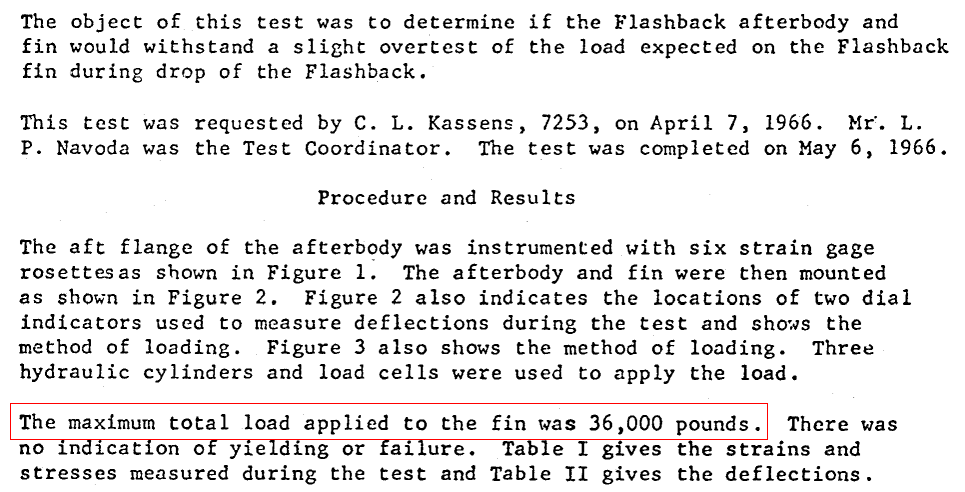
I’m not quite sure how that load of 36,000 pounds would relate to any actual forces applied to an actual bomb, but it *may* indicate the weight.
Other reports list the sizes and weights of items to be shipped to Oahu (and then to Johnston Atoll) for the test. Some of them are intriguing… what is “EMPTV?” TV certainly means “test vehicle.” But does “EMP” mean Electromagnetic Pulse? If so, does that mean another bomb-like unit, or just a science package, meant to be *hit* with an EMP to see how it reacts? Or is it a specific EMP generator, to be dropped out of an aircraft? Whatever it is, it weighed 14,500 pounds and was around 221 inches long and perhaps 59 or so inches in diameter, and was quite classified (SRD = Secret Restricted Data… “Data concerning the design, manufacture, or utilization of atomic weapons; production of special nuclear material; or use of special nuclear material in the production of energy“).
And there’s 38,000 pounds of “test equipment,” which could be anything:
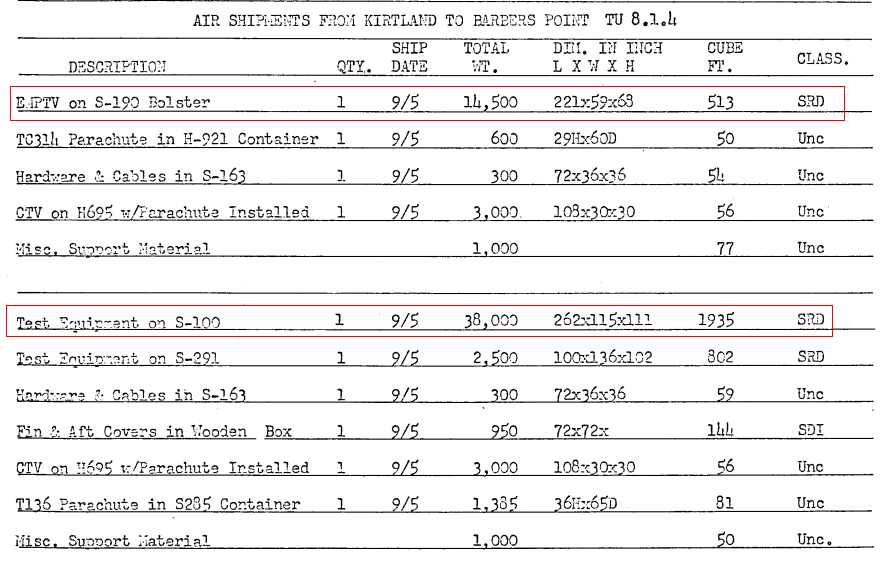
There was also this:

Here, the “BTV” is the “Big Test Vehicle,” 25,000 pounds, 309 inches long by up to 76 inches in diameter, also classified SRD. Big as this is, though, it’s possibly not the device hanging below the B-52’s belly; the BTV is referenced several times in a way that seems to make it distinct from the Flashback Test Vehicle. But perhaps they are the same thing.
The Flashback Test Vehicle, fortunately, was shown in a fair diagram of a wind tunnel model. Full scale, it was 297 inches long (not counting parachute pack or what appear to be antennae) and was ~96 inches in diameter. This makes it bigger, and presumably heavier, than the BTV. So 36,000 pounds is not unreasonable.
Other ill-described tests show the Flashback as a much smaller unit than the bomb. This, *perhaps,* is merely the “physics package” of the device. This test, illustrated with one of histories worst-quality photos, was carried out in a very cold high altitude chamber, and shows two more mysteries: the “Companion Test Vehicles,” or CTVs, which are unexplained. Speculating wildly, they might have been designed to have the same ballistic properties as the Flashback, so if you drop them from the B-52 along with the Flashback, they’ll fall along with it, following the same trajectory and staying reasonably close. Perhaps thy had cameras. perhaps they had sensors. Perhaps they had transmitters. Who knows.
And there was also the “UTV.” No further data.
Perhaps the Flashback, BTV, EMPTV and UTV were all different sizes of new gigantic bombs…?
Code names generally have no relationship to the subject, but are chosen essentially at random. One would never know that “Copper Canyon” was a program to develop a scramjet SSTO. Similarly, “Operation Paddlewheel” tells nothing. But perhaps, just barely, “Flashback” might have some meaning. Comparing the Flashback to the Tsar Bomb, it it remarkable how similar they are in terms of both size and shape. One might be forgiven for wondering if Flashback was the end result of someone trying to design a Really Big Bomb based on nothing more than a verbal description of the Tsar Bomb, given, perhaps, by a spy or defector. So *perhaps* this project was a “flash back” to the earlier Soviet design. If so, what was the purpose? Was it to give the United States the same insanely pointless capability? Or was it just to find out what the capabilities and limitations the Soviets had gifted or saddled themselves with?
Using the wind tunnel model diagram, I’ve reconstructed the Flashback to scale with the Tsar Bomb:
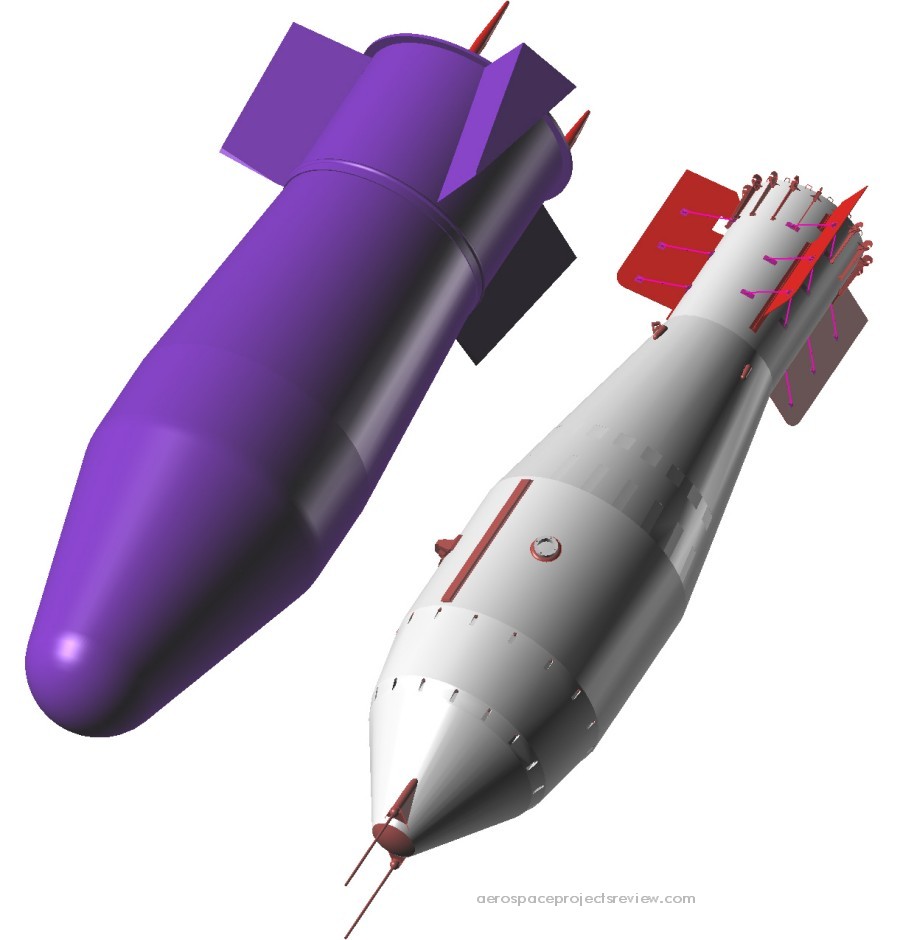
As can be seen, the Flashback had much the same configuration, but was substantially “fatter.” Impossible to say if that was because the US designers needed the extra diameter to get the same yield (theoretically 100 megatons), or if Sandia Labs went head and designed themselves an even bigger bang. What use is a 200 megaton bomb? Not much. But then, neither is a 100 megaton bomb, especially one so big that the carrier aircraft essentially has to *lumber* to the target all the while carrying the worlds largest bullseye.
As always, if anyone has any further info, I’d love to see it.
PS: I’ve taken the Flashback model and have turned it into 2D CAD diagrams, including scale comparison with the Tsar and showing it stuffed into the B-52’s belly. This diagram will be one of this months rewards for Patrons of the APR Patreon. A simplified version will be included at the $5 level; the full diagram will be in the $8 level rewards package. So if you’d like access… sign up for the APR Patreon.
UPDATE:
It’s good to get a fresh perspective. Sadly, the perspective emailed to me was that the Flashback sure looked like a missile nosecone. So I pulled up the Flashback diagram I made from the wind tunnel model diagrams and put the RV from the Titan II ICBM on top of it. It’s not an exact match, but it’s distressingly close. If it wasn’t for the noticeably larger radius of the Flashbacks nose, I’d say it was spot-on… the outer diameter and angle are incredibly close matches.
So…what would be the point of that? Some sort of science experiment, clearly, rather than a weapons test. But what point would there be in dropping a Titan RV from a B-52? Why dangle it from a chute? Why add the heavy tail & fin assembly?
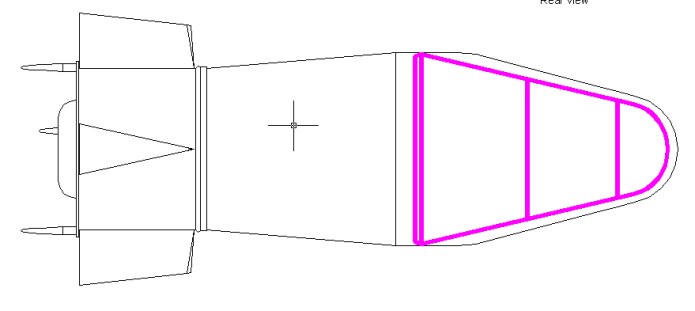
If it turns out that this was an experiment with the Titan RV, that would be less interesting than the revelation that the US developed a 50 to 100 megaton nuke. But it’s still interesting. Just not *as* interesting.
